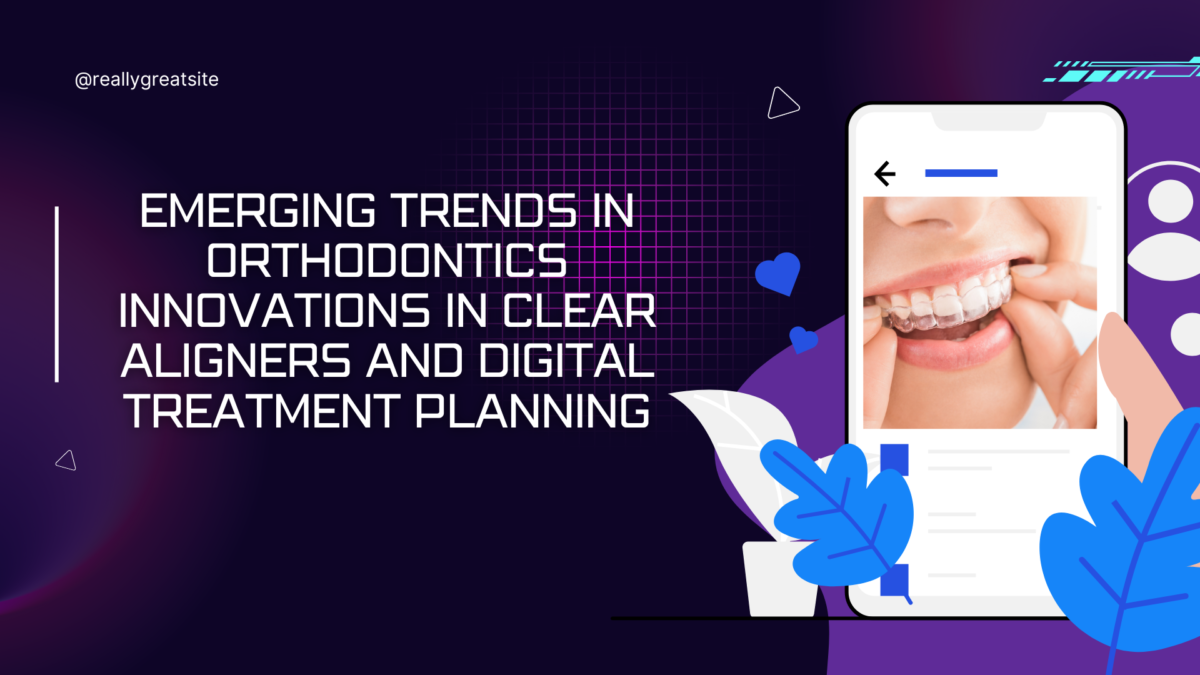
Orthodontics has undergone significant transformations in recent years, driven by advancements in technology and materials. Among the most noteworthy trends are the innovations in clear aligners and digital treatment planning. These developments are reshaping how orthodontic treatments are planned and executed, offering patients more effective, comfortable, and aesthetically pleasing options.
Clear aligners are a modern alternative to traditional metal braces. They consist of a series of custom-made, removable trays designed to gradually shift teeth into their ideal positions. Made from transparent plastic, aligners are less noticeable than metal brackets and wires, making them a popular choice for both adults and teens.
Recent innovations in material science have significantly improved the effectiveness and comfort of clear aligners. Modern aligners are made from advanced thermoplastic materials that offer greater flexibility, durability, and precision. These materials allow for more effective tooth movement while minimizing discomfort.
The precision of clear aligners has been greatly enhanced through advancements in 3D scanning and printing technologies. Customization is now more accurate, resulting in better fit and effectiveness. With improved fit, patients experience less discomfort and more predictable results.
Many clear aligner systems now integrate with smartphone apps, allowing patients to track their progress, receive reminders, and communicate with their orthodontist. This integration makes it easier for patients to adhere to their treatment plan and stay informed about their progress.
Digital treatment planning involves using computer software to create detailed, precise plans for orthodontic treatment. This approach allows orthodontists to visualize the movement of teeth and predict the outcomes of different treatment options.
3D imaging technologies, such as cone-beam computed tomography (CBCT) and intraoral scanners, have revolutionized digital treatment planning. These technologies provide detailed, accurate images of the teeth, gums, and jawbone, enabling orthodontists to make more informed decisions.
Digital treatment planning software often includes simulation features that allow orthodontists and patients to visualize the expected outcomes of treatment. This helps in setting realistic expectations and making informed decisions about the treatment plan.
By using digital tools, orthodontists can streamline the planning process, reduce the likelihood of errors, and enhance the overall efficiency of treatment. Digital records are also easier to update and share, improving communication between the orthodontist and patient.
The integration of clear aligners with digital treatment planning has led to remarkable improvements in treatment precision. Orthodontists can now design aligners with a high degree of accuracy, resulting in more effective and predictable outcomes.
Digital planning allows for highly personalized treatment plans tailored to each patient’s unique dental structure and alignment issues. This personalization helps in achieving optimal results and improving patient satisfaction.
With digital tools, orthodontists can monitor the progress of treatment in real time and make necessary adjustments. This capability ensures that any issues are addressed promptly, leading to better overall outcomes.
One of the primary benefits of clear aligners is their aesthetic appeal. They are virtually invisible, making them a preferred choice for individuals who are concerned about the appearance of traditional metal braces.
Clear aligners are removable, allowing patients to eat and drink without restrictions. They also eliminate the discomfort associated with metal braces, such as irritation from brackets and wires.
Advancements in both clear aligner technology and digital treatment planning have contributed to reduced treatment times. Patients can achieve their desired results more quickly compared to traditional orthodontic methods.
The future of orthodontics may see greater integration of artificial intelligence (AI) in treatment planning. AI algorithms could further enhance the accuracy and efficiency of digital treatment plans, leading to even better outcomes.
Ongoing research into new materials and technologies will likely lead to further improvements in clear aligner effectiveness and comfort. Innovations such as smart materials that respond to temperature or pressure could become part of future clear aligner systems.
Remote monitoring technologies are expected to play a larger role in orthodontic treatment. Enhanced connectivity and advanced monitoring tools will allow for more frequent and accurate assessments of treatment progress without requiring frequent in-office visits.
The orthodontic landscape is rapidly evolving, driven by innovations in clear aligners and digital treatment planning. These advancements are making orthodontic treatment more effective, comfortable, and accessible for patients. As technology continues to advance, we can expect even more exciting developments in the field, offering enhanced solutions for achieving optimal dental alignment and overall oral health.
#ClearAligners, #DigitalOrthodontics, #OrthodonticInnovations, #3DTreatmentPlanning, #ModernOrthodontics, #ClearBracesTechnology, #DigitalImpressions, #OrthodonticTrends, #AdvancedAligners, #FutureOfOrthodontics